Mentioning Alaska typically conjures images of sub-zero temperatures, inhospitable conditions, and an overall air of mystery, likely due to how Western media has portrayed the state. As we prepared for our trip, we weren’t entirely sure what to expect.
Sure, we did our research before heading out to the last frontier, but nothing really prepares you for this place.
If nature, the outdoors, and wildlife are what you’re after, you’ll be hard-pressed trying to find anything which comes close to what Alaska has to offer.
In this 10 day Alaska itinerary, we’ll be detailing how we traveled within Alaska during the month of September, the stops we made along the way and tips which may be helpful for anyone interested in visiting the 49th state.
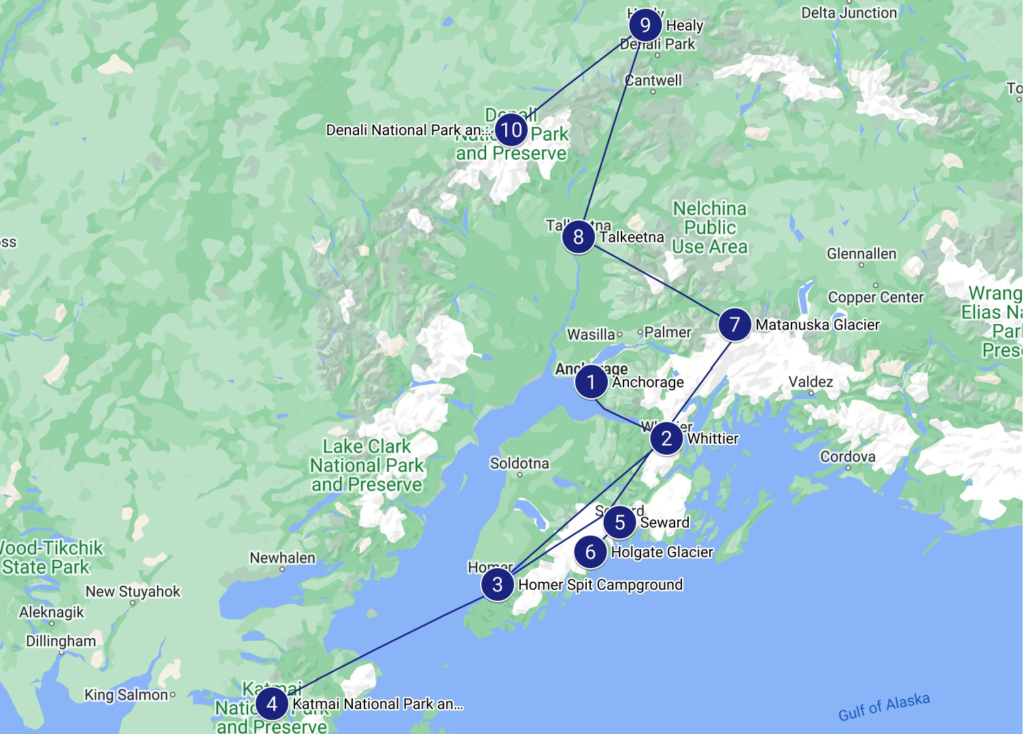
Is September a good time to visit Alaska?
We found September to be great both in terms of weather and things to do. The foliage colors were beautiful in September, especially in Denali National Park. Stores and attractions start preparing to close for the winter season in September so while everything was up and running when we visited, things would have been different had we visited just one week later (we visited between the 2nd September-11th September).
What’s the weather like in Alaska in September?
Weather was generally quite nice with some rainfall on a day or two throughout our trip. Other than that, we were able to get away with warm pants, a fleece and a light rain jacket. Temperatures ranged between 43°F/6°C and 57°F/14°C with temperatures being a bit colder the further north we went (we noticed the difference when we were in Denali).
How to get around in Alaska
Our transportation mode of choice was a campervan rental through Outdoorsy. The experience of driving and living in a campervan played a huge part in making the trip awesome.
While we’re sure that other modes of transportation like a car or a cruise (a very popular option when visiting Alaska) would have been cool in their own way, we’re also sure that the overall experience would have been completely different from that of renting a campervan.
Renting a campervan not only allowed us to get the most out of our experience, but it was also the most cost-effective way of travelling since you’re saving on accommodation.
Do I need to buy the Milepost magazine?
When planning our trip, we came across multiple posts and articles mentioning the Milepost travel guide. We weren’t sure if we should purchase the guide since we were pretty sure that Google Maps would be sufficient. We however figured that if anything, it would serve as a nice souvenir so decided to go ahead and buy it. Good thing we did because we ended up using it quite a bit. It provided detailed information on things to see, where we could boondock and campgrounds at different mileposts.
Should I buy a sim card in Alaska?
Yeah, we’d highly recommend you do. We purchased an AT&T sim card from Walmart in Anchorage. We got the 15GB data plan for $40. Connection was generally quite good.
Where can you park your campervan overnight?
For the most part, we parked on the side of the road with little to no planning in advance (yes, boondocking is legal in most areas in Alaska!). We had a vague idea of the next day’s destination and parked on the side of the road when we were either tired enough or found a nice place to stay for the night.
Where to eat on a road trip in Alaska?
Our campervan came with a portable stove and a few propane gas tanks. We’d use it for breakfast wherever we’d happen to be on the day and would just park on the side of the road and get cooking (sounds like something out of Breaking Bad eh?) when we’d get hungry. There were a few times where we ate in restaurants like when we were in Seward and Healy, but we mostly cooked ourselves throughout the trip.
We bought most of our food on our first day from Walmart in Anchorage. We’d recommend doing the same since grocery stores in other places like Seward were more expensive (in general most items are way more expensive in Alaska when compared to other states in the US).

Day 1: Anchorage
Upon arrival at Anchorage airport, we picked up our rental and drove towards the closest Walmart where we bought food and other groceries for our upcoming trip. Next step was figuring out where to buy bear spray. Not an item you buy everyday but it’s quite essential in Alaska.
Potter Mash was our first planned stop in Alaska. It’s a nice, well maintained boardwalk with multiple opportunities throughout the path to see different bird species and salmon – we spotted our first bald eagle here.
We then drove towards Beluga point which gets its name from the Beluga whales you can see here (we were lucky enough to see a few).
It was then time to start thinking about where to sleep for our first night in Alaska. We drove for around another 20 minutes to Turnagain Arm Viewpoint making it our first overnight location.
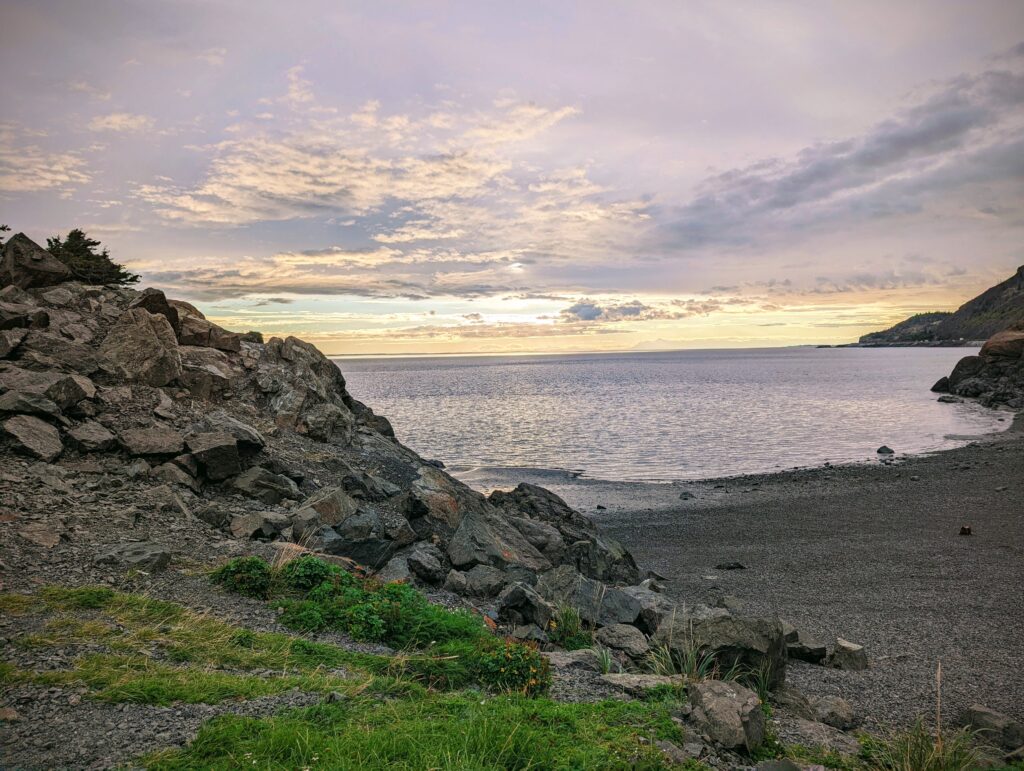
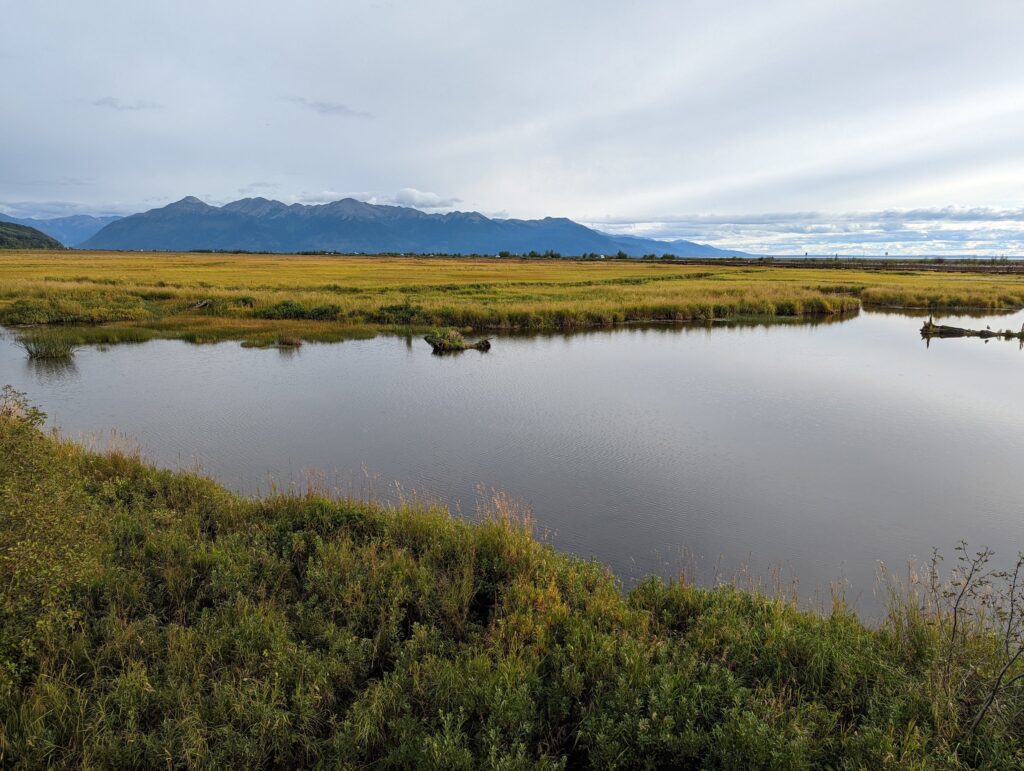
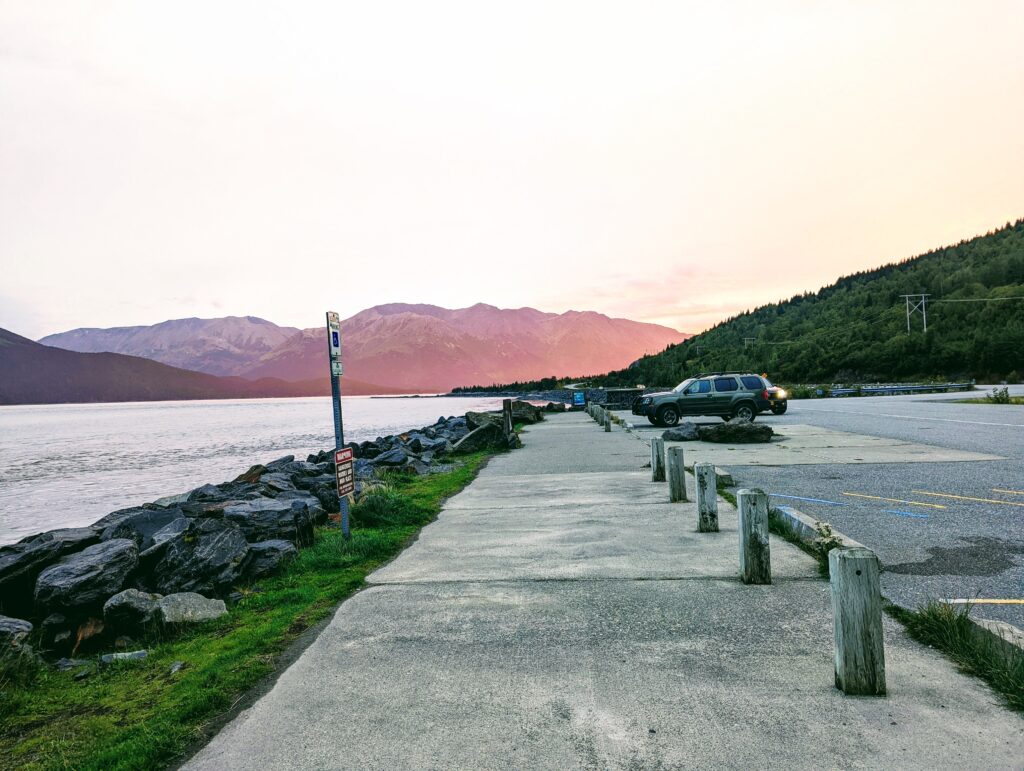

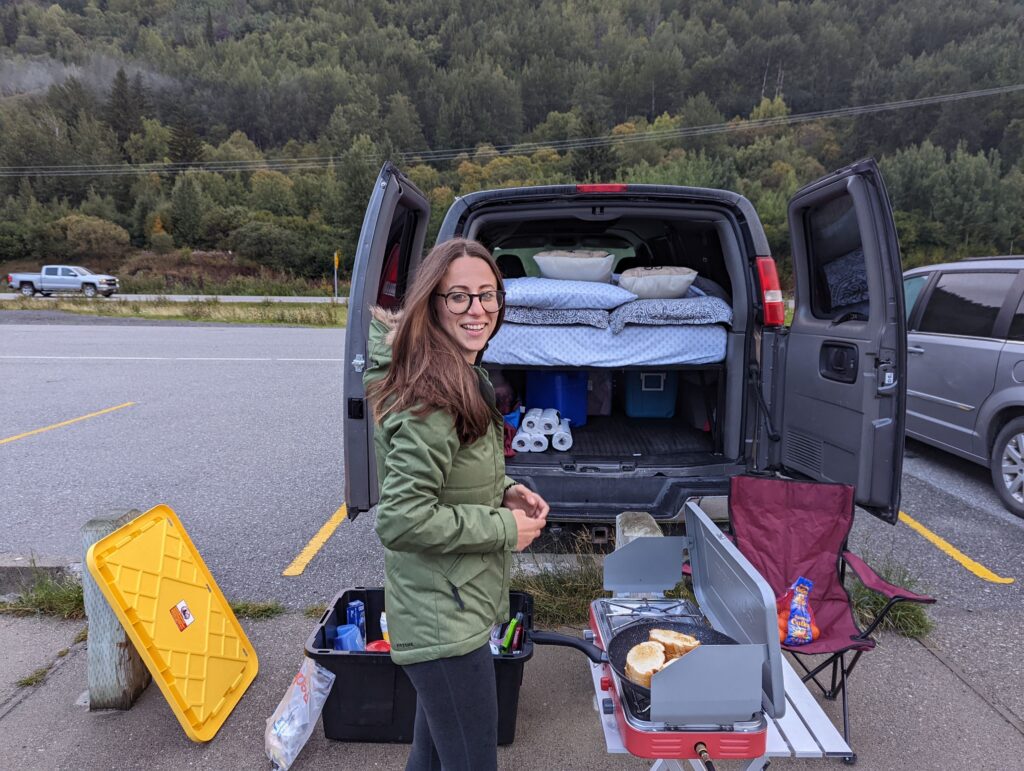
Day 2: Whittier
We drove for about 40 minutes from Turnagain Arm Viewpoint to Whittier passing through the Whittier tunnel. Being the longest railroad-vehicle combined tunnel in North America, the tunnel is an attraction in and of itself.
We were planning on trekking the Portage Pass trail but it was closed due to construction. There wasn’t much to see in the city so after spending a few hours in Whittier, we decided to head towards Ninilchik at mile S124.9. This is where we slept on our second night in Alaska. The views here were absolutely stunning. We liked this spot so much that we ended up sleeping here twice throughout our trip.


Day 3: Homer
On the morning of day 3, we drove for around 45 minutes from Ninilchik to Homer. We pre-booked a spot at Homer Spit Campground. The campground is nicely located right on the beach, offering restrooms and hot showers in addition to the campsite itself.
We spent a few hours enjoying the Spit’s gift shops and galleries, all within walking distance from the campground.
For the rest of the day, we found ourselves watching Sea Otters pop up every so often from the sea (they are truly cute little critters), catching a magnificent sunset from right on the beach, or pretty much relaxing at the campsite. This campsite is highly recommended (go for the beachfront spaces).
The campsite was of course our overnight location for day 3.
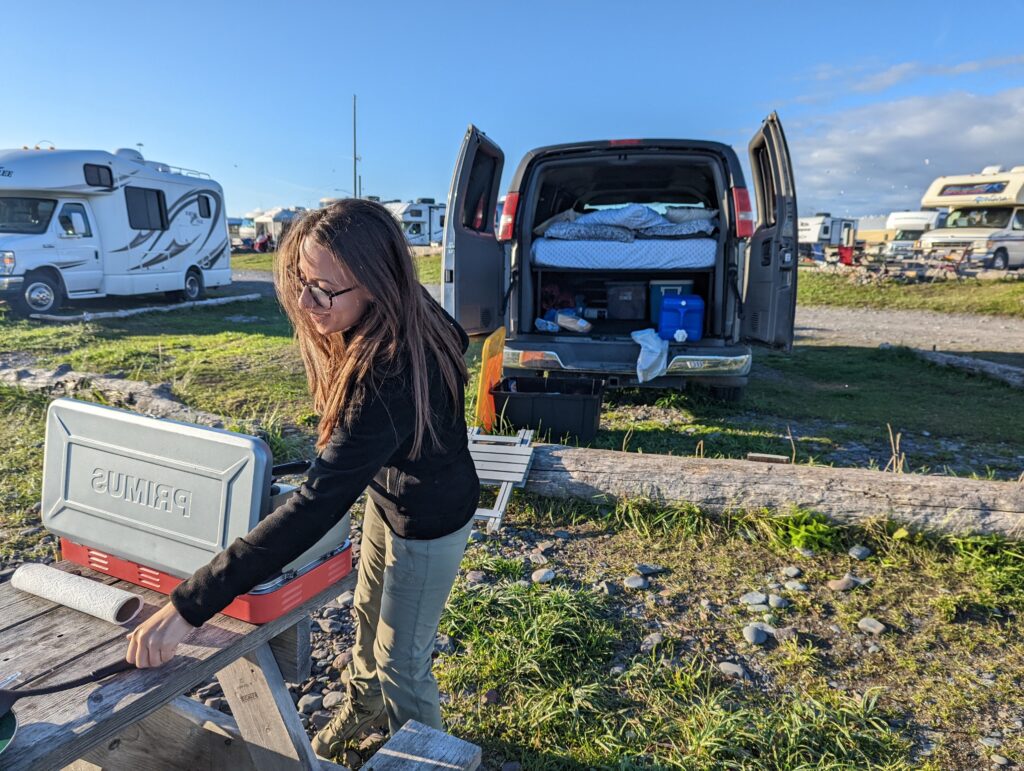


Day 4: Katmai National Park & Bear Viewing
Woke up to an amazing sunrise then drove towards the bear viewing agency office. Spoiler alert: This definitely went down as one of our highlights of the trip!
After a short briefing, we boarded a small 6-person propeller plane which flew over some of the most beautiful sites we have ever seen. The flight alone was beyond amazing.


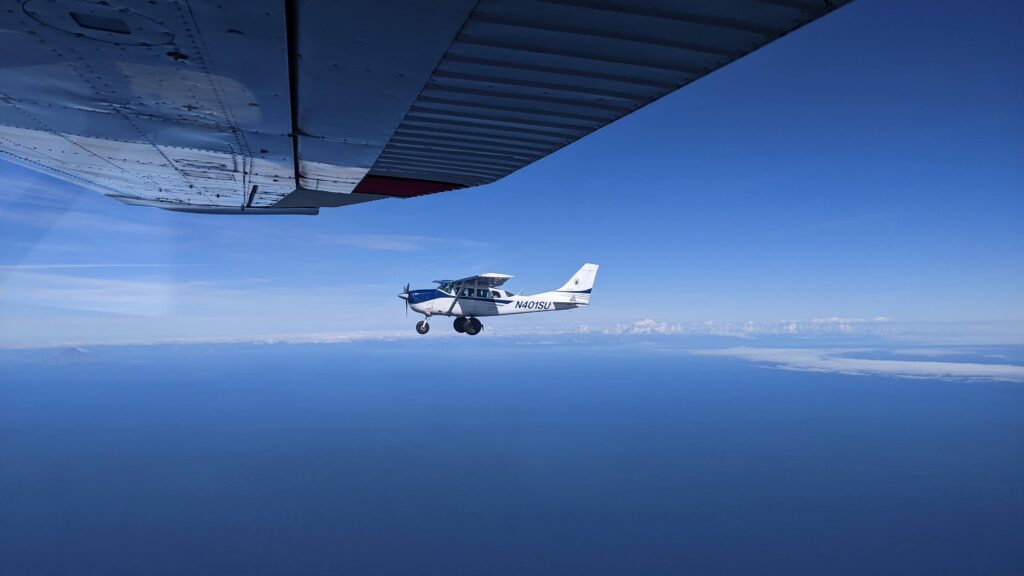
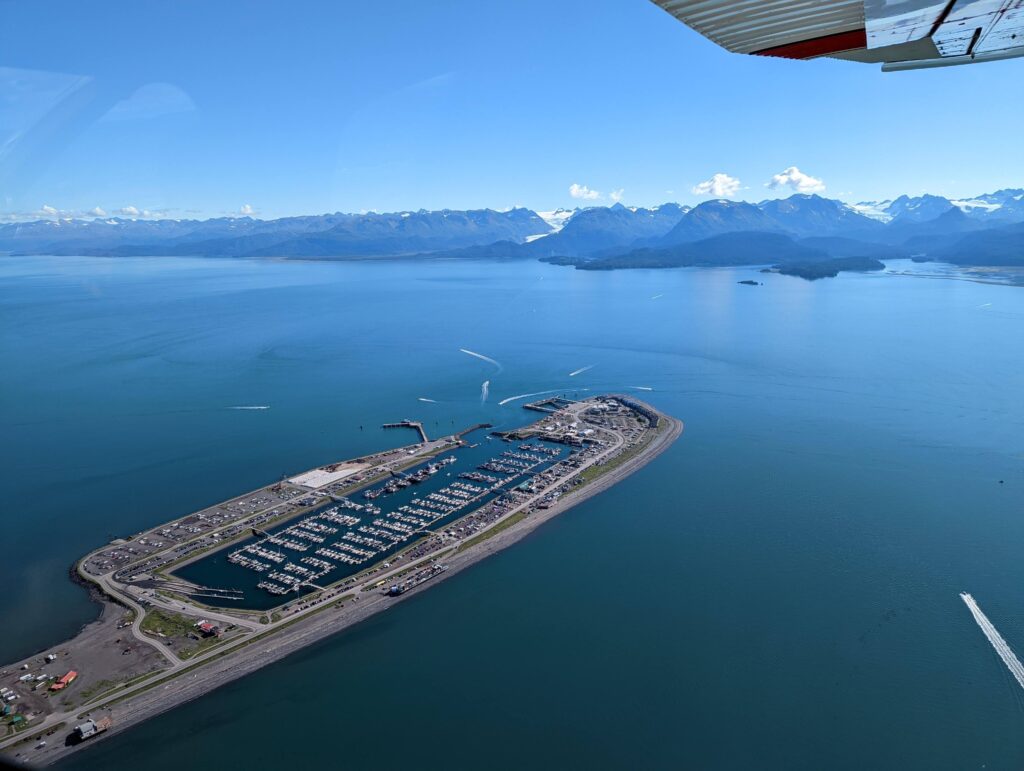
After around an hour and a half in the air, we landed in Katmai National Park. Accessing the park is only possible by plane or boat. We then started walking towards the bear viewing spots and it wasn’t long before we spotted the first brown bear. Nothing really prepares you for being so close to these magnificent animals. We saw mother bears, cubs, bears fishing for salmon, and a few close encounters between bears (they’re highly territorial).
The tour is organized by splitting up in around 6-8 person groups. Even though the bears are used to human presence, you can never be too careful, so we took the necessary precautions and constantly respected their space.
We spent around 3 hours walking up the river. We saw around 10 bears in total.
It’s extremely difficult to put this experience into words. The bears, the location, it’s pretty much surreal.


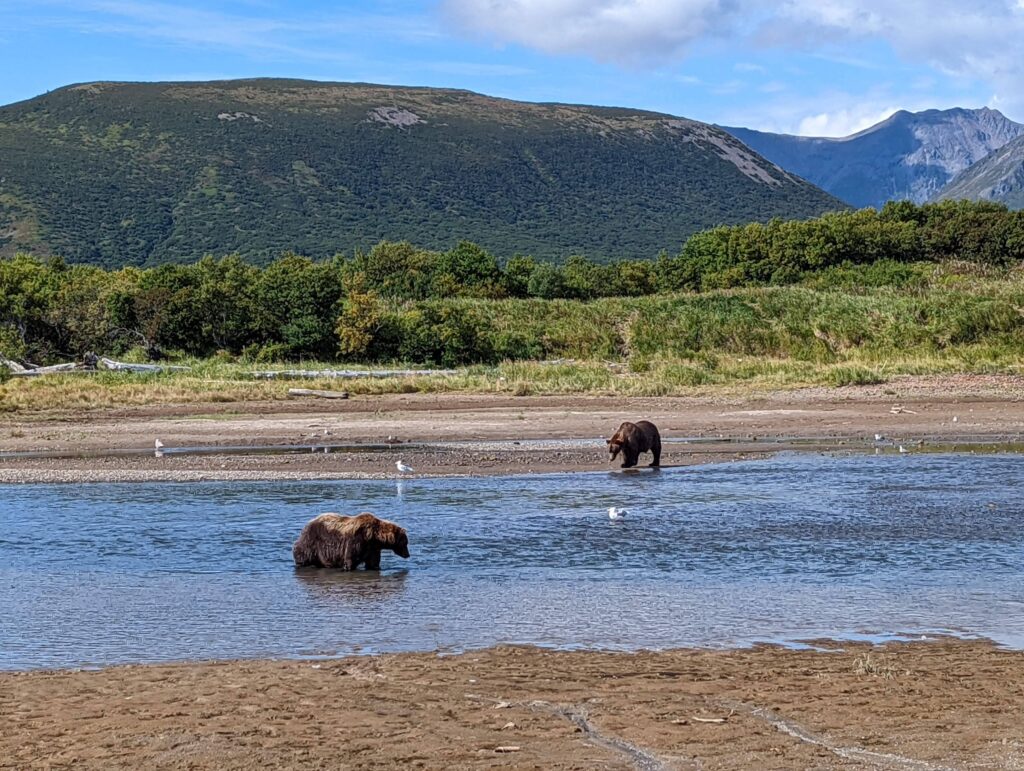
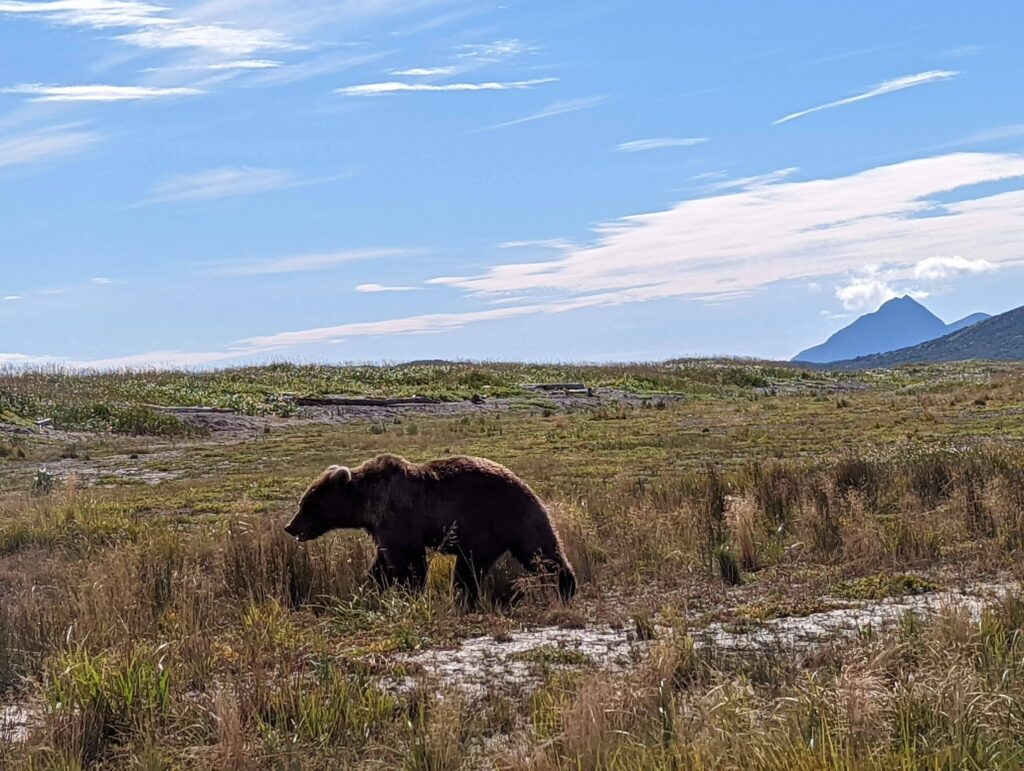
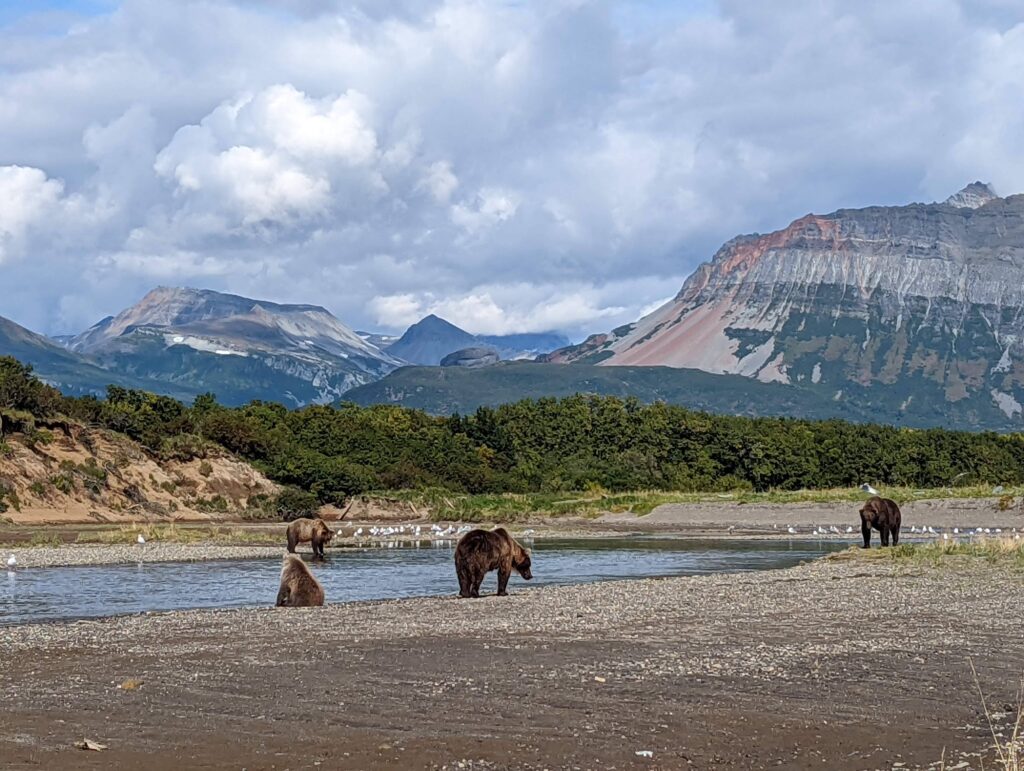
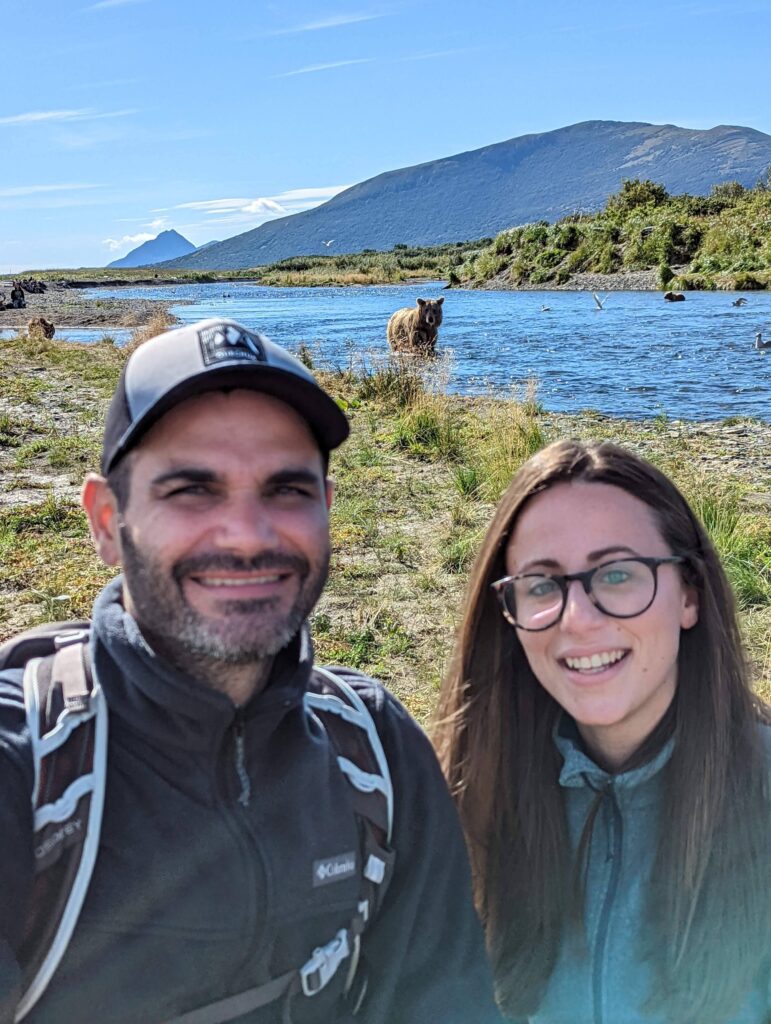
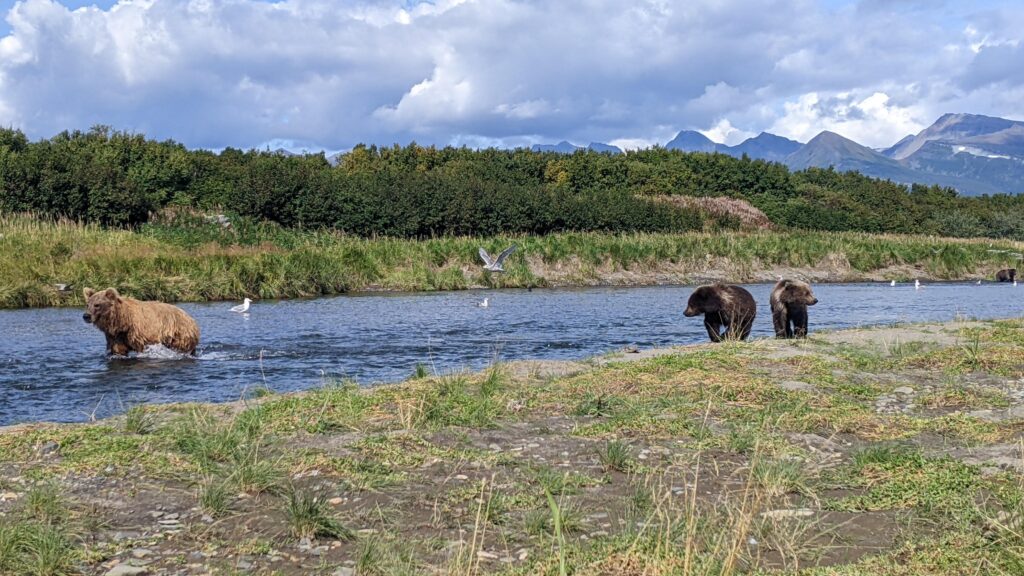
Once back from the tour, we drove for about 45 minutes back to Ninilchik at mile S124.9, making this location our overnight spot for the second time.
Day 5: Kenai Fjords, Exit Glacier, Seward
Getting to Exit Glacier was our goal here. The amazing thing about Alaska is that irrespective of your destination, getting there always comes with its perks and surprises. You can never get sick of the views. Can’t tell you how many times we’d stop on the side of the road just to take in the views or wildlife. Getting to Exit Glacier was no exception. It would be impossible to list all stops but one which stood on our way to Exit Glacier was Moose Pass. Moose Pass is a scenic mountain town surrounded by the Chugach National Forest making it a beautiful pit stop on the way to Exit Glacier.
The Exit Glacier is derived from the Harding Icefield in the Kenai Mountains. The trek is an easy one and takes around one hour to complete. It is nicely sign posted to show how the glacier has receded throughout the years and is a visible indicator of glacial recession due to climate change (Exit Glacier had retreated a little over 1.5 miles in two centuries as of 2015).
We drove from The Exit Glacier to J 3.7 on Herman Leirer Road and this was our overnight spot for the day.
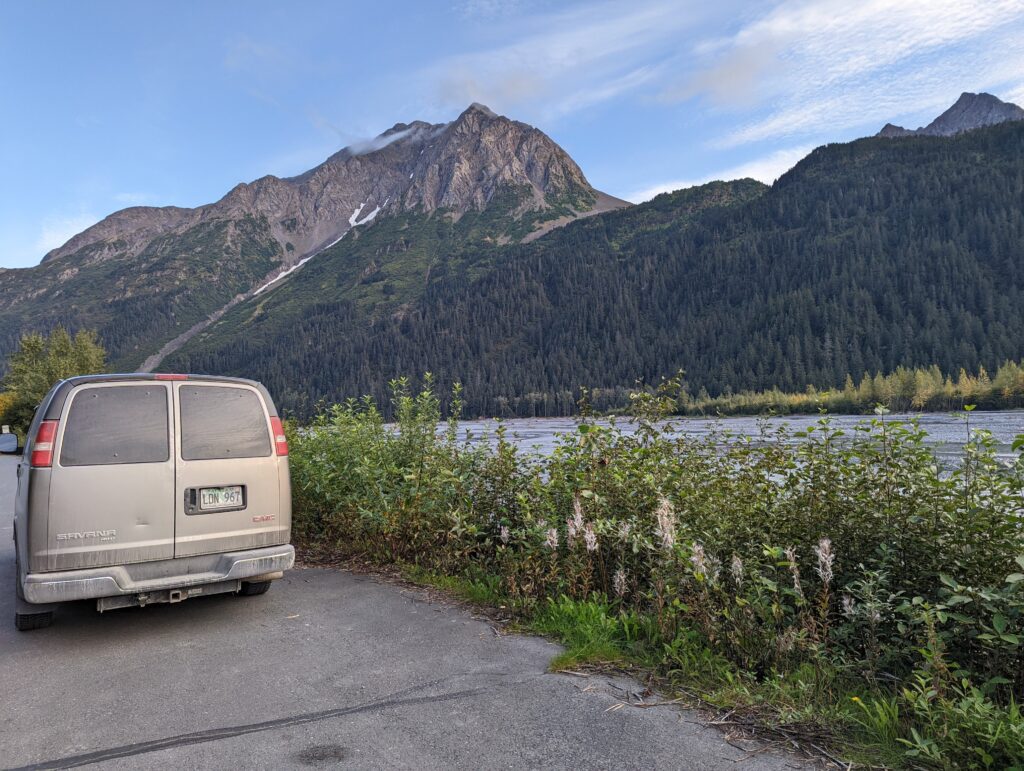

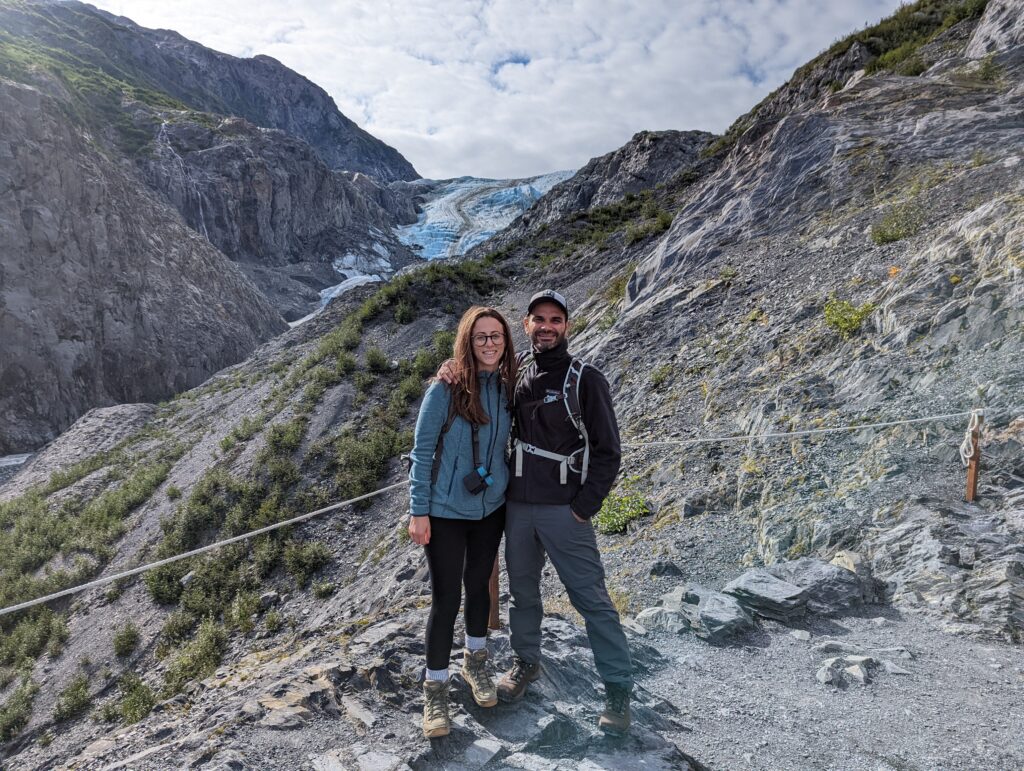
Day 6: Kayaking, Holgate Glacier
Our day started with a short drive to Seward Boat Harbor where we met our guides at Sunny Cove Kayaking.
We boarded a private charter and cruised for about two hours through Resurrection Bay spotting different wildlife along the way including Bald Eagles, Sea Otters, Mountain goats, Harbor seals, Stellar sea lions, Puffins and a Black Bear.
Upon arrival at the launch beach, the guides spent around a half hour getting us outfitted and running through basic kayaking instructions.
We spent around 3 hours of kayaking along the rugged shoreline, occasionally stopping to immerse ourselves in the sights and sounds of floating near an actively calving tidewater glacier.
It can get really cold especially if you get wet so a word of advice, try not to get wet 🙂
We continued driving north for around an hour and half and stopped for the night at Turnagain Arm Viewpoint.
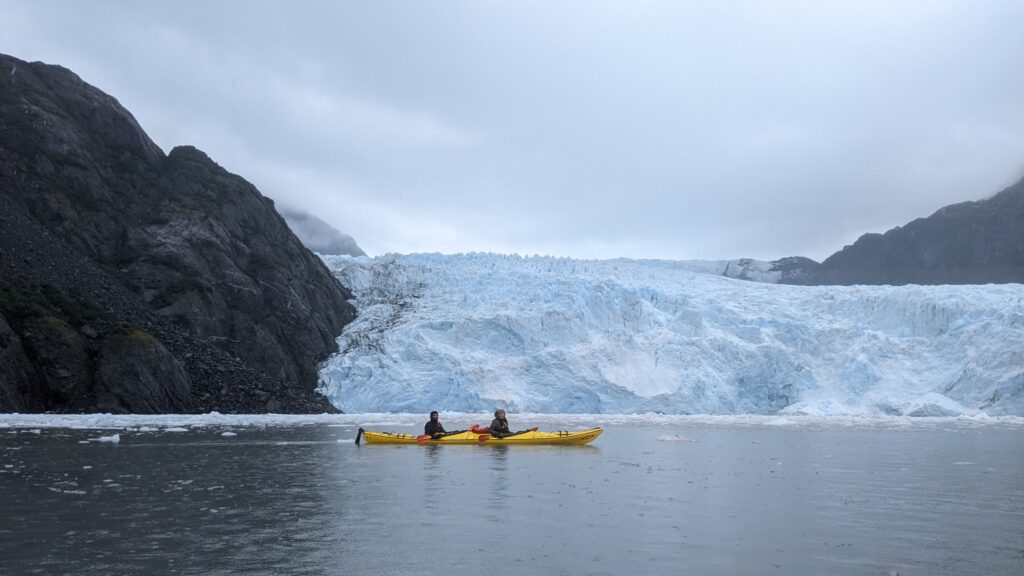


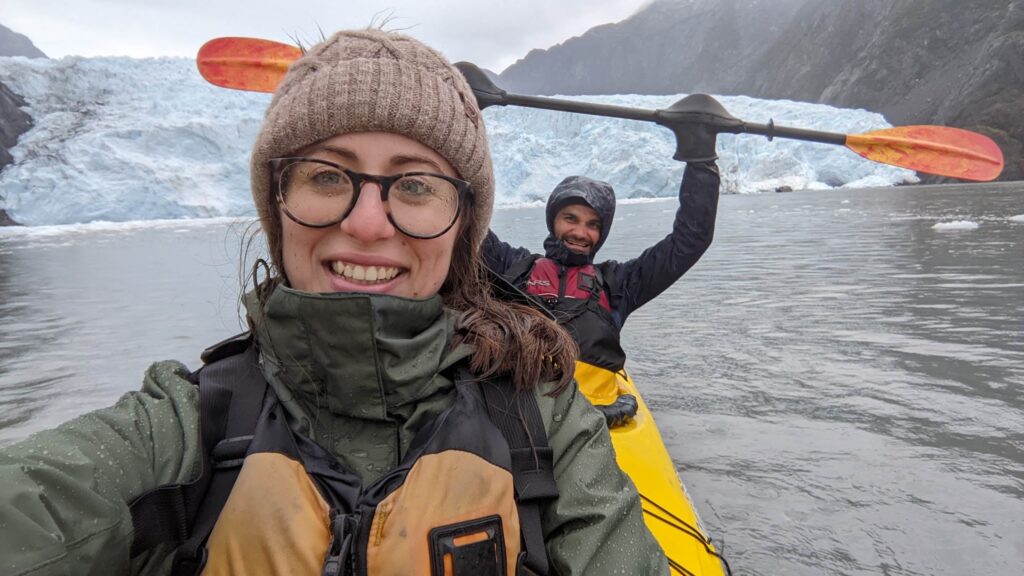
Day 7: Matanuska Glacier, Glacier View, Chickaloon
On the morning of our 7th day, we drove towards Glacier View along Glenn Highway. We had pre-booked a hike on the Matanuska Glacier with NOVA. The drive from Turnagain Arm Viewpoint to Glacier View had some amazing scenic stops: Chickaloon and Glacier View are a must if you’re planning on taking this route.
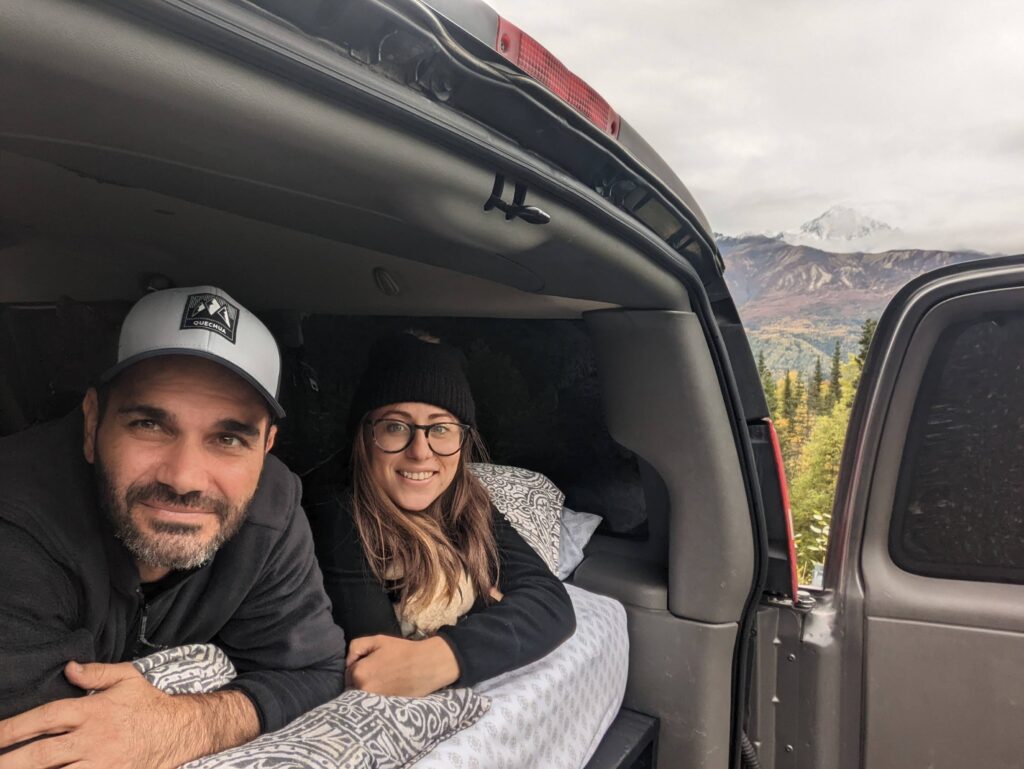
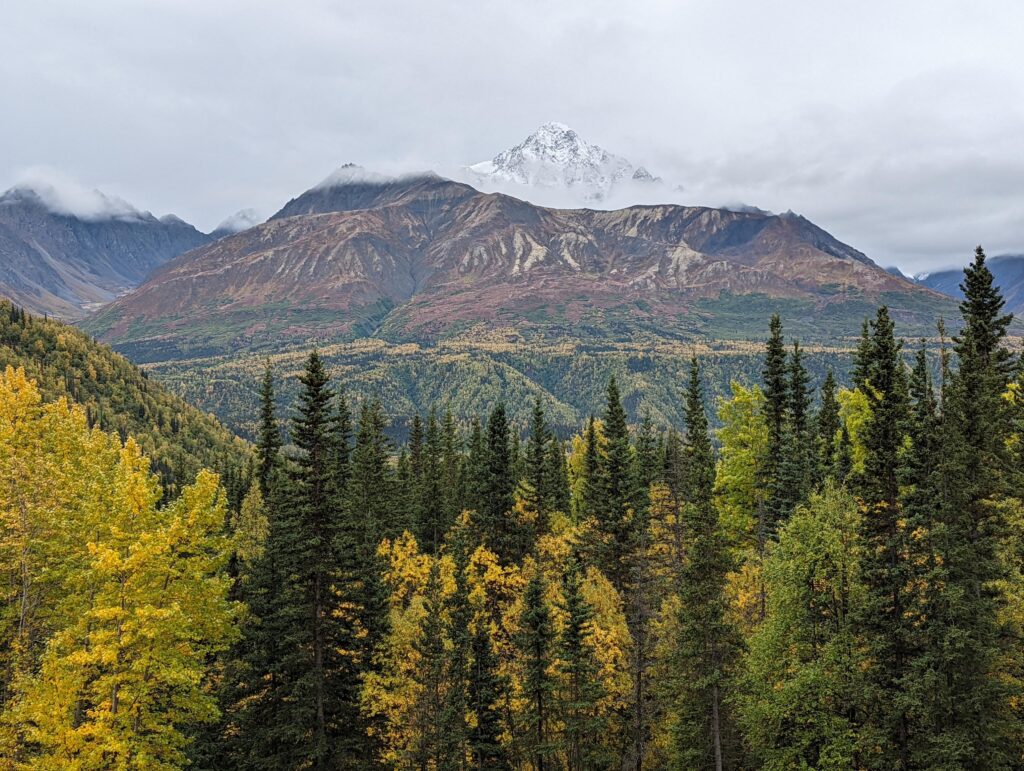
The hike on Matanuska Glacier starts at NOVA’s offices where guides provide you with the required gear. A short drive then takes you to the glacier terminus.
The hike itself takes around 2-3 hours with constant views and evolving glacier features to check out including flowing moulins, erratics and deep crevasses. Seeing and learning about the Glacier’s active geology really made this tour worthwhile.
At some point throughout the road trip, we booked a Cabin in the whereabouts of Matanuska. This is where we stayed for the night following our hike on Matanuska Glacier.
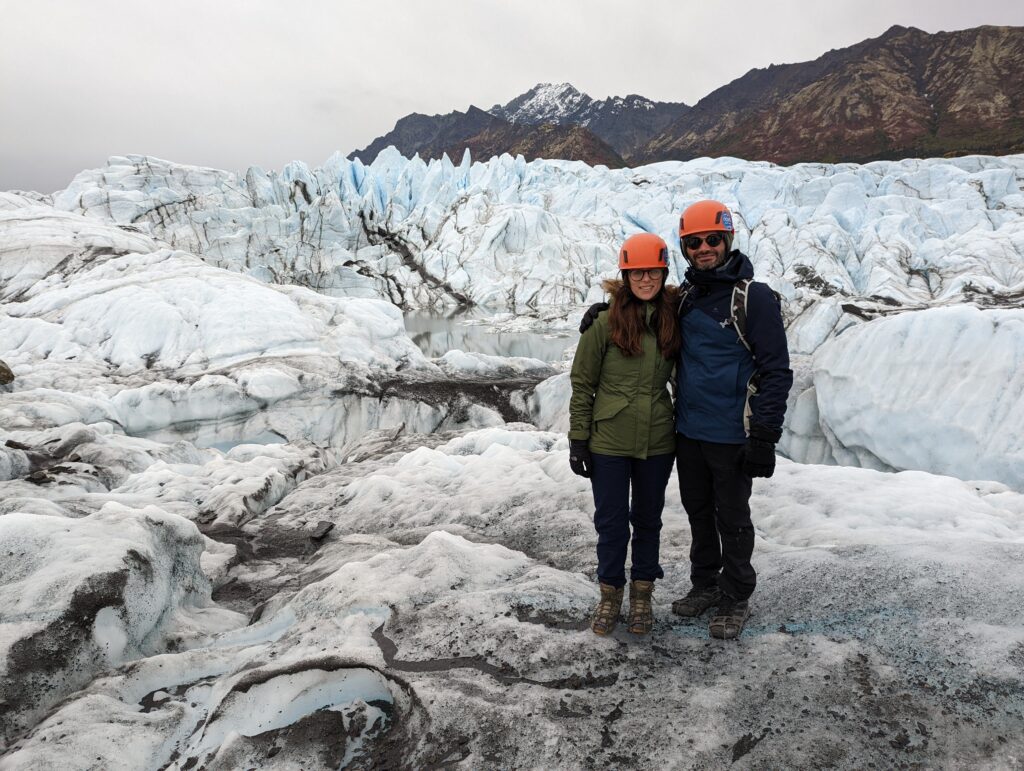
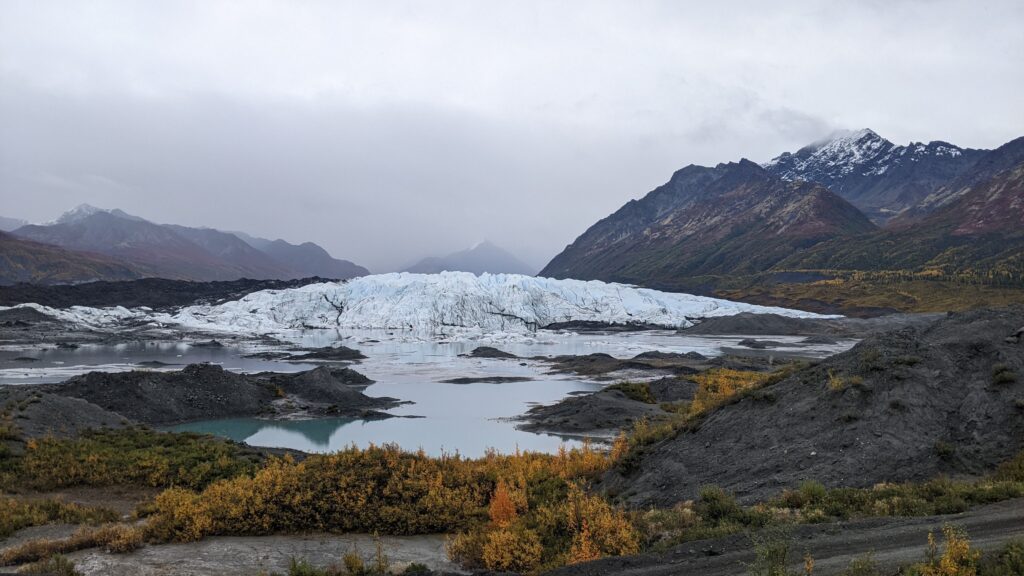
Day 8: Talkeetna & Healy
Continued driving north towards the cozy town of Talkeetna on day 8. This small town is nestled at the base of North America’s tallest peak, Denali.
The town really comes close to what you’d imagine when thinking of life in small-town Alaska.
We spent a few hours walking down Main Street browsing historic buildings, art galleries and shops. The red and white Nagley’s Store which is synonymous with Talkeetna, dates back to 1921 and is on the National Register of Historic Places.
We drove from Talkeetna to the Denali Visitor Center and booked our Denali National Park bus tour for the next day. There are a few trails which start from the Visitor Center so we went on a short hike on one of the trails.

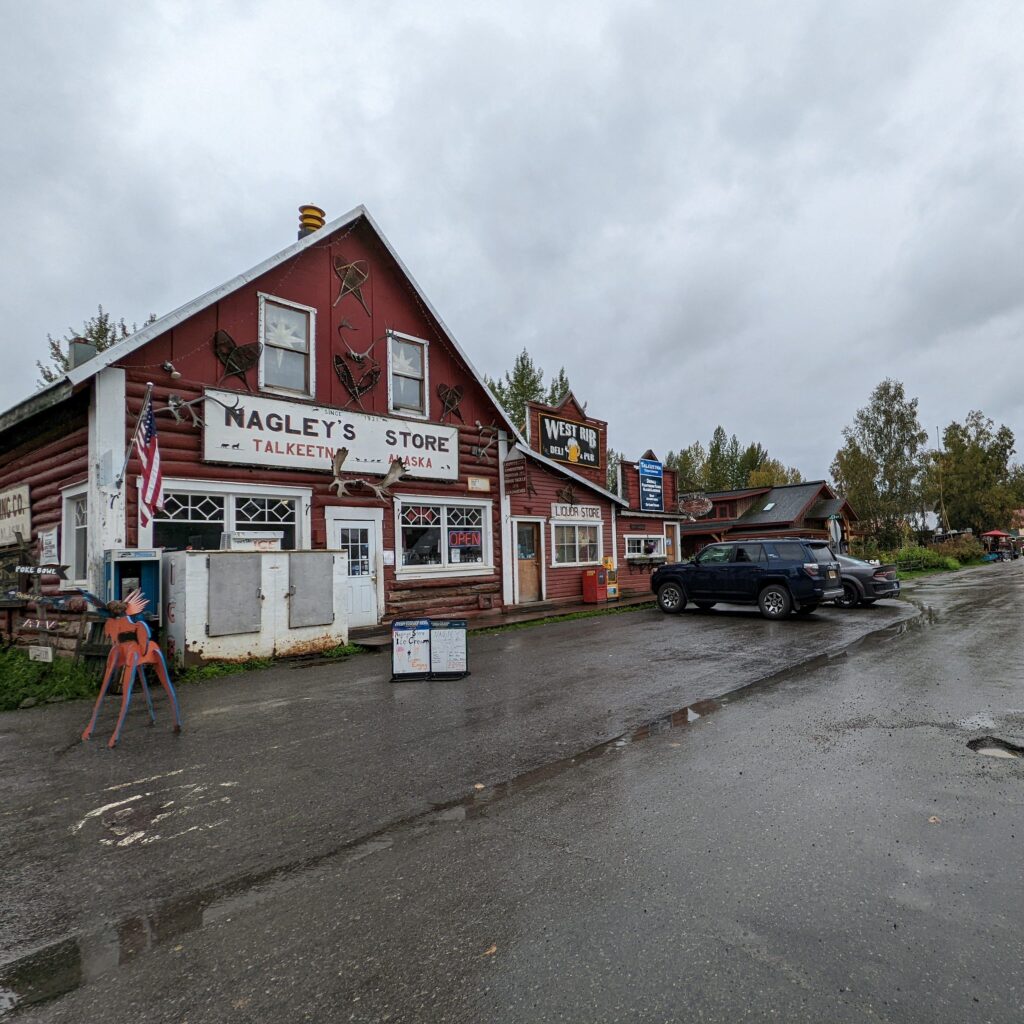
For dinner that night, we went to this really cool brewery called the 49th State Brewing located in Healy. Apart from the great food and beer, the brewery’s yard now hosts the “Magic Bus” used in the film Into The Wild. If you’re familiar with the story of Christopher McCandless, then we’re sure you’ve made the connection.

We drove 2 minutes south of the brewery and found a turnout on the side of the road. This became our overnight spot for day 8.
Day 9: Denali National Park
We showed up at Denali Visitor Center at around 07:30 for the bus tour we had booked the previous day. Buses depart from the Visitor Center and stop and re-board at multiple locations throughout the trip.
The park is beyond beautiful, and September is a spectacular time to visit, where much of the vegetation transforms from a lush green into a mix of red, amber, and orange hues.
We spent a total of around 4 hours in the park and in addition to the beauty of the colors and the park itself, we were lucky enough to see grizzly and black bears, moose and caribou. Tip: sit on the left side of the bus, you’ll catch better views.


We started driving south towards Anchorage airport. Even writing this bubbles up slight feelings of sadness since this pretty much means that our road trip in Alaska was coming to an end.
After around 4 hours of driving from Denali National Park, we stopped on the side of the road at Knik River and this was our overnight spot for the last night of the road trip.
Day 10: Anchorage
Drove from Knik River to Ted Stevens Anchorage International Airport for around 45 minutes. Left our campervan at the airport parking lot and caught our flight back to Vancouver -> Toronto.
Last words…
We started this post by saying that ahead of visiting, the mere mention of Alaska came with a touch of a mysterious aura. After having spent 10 days in Alaska, it still has a touch of mystery to it.
The main difference is that before, the mystery was more of a logical one, whereas now it is more of a feeling, and a nice feeling at that. You know the feeling you get when you think of something great, but you’d then have to think back to see if that event or experience actually happened? I know this sounds super cheesy but this is the best explanation we could articulate of our experience in Alaska. We hope that if you’re reading this and have visited Alaska, or will visit Alaska in the future, you’ll be able to come back to this and help us do a better job at explaining what this magical place meant to you 🙂
Disclosure: Please note that some of the links above may be affiliate links, and at no additional cost to you, we earn a commission if you make a purchase.